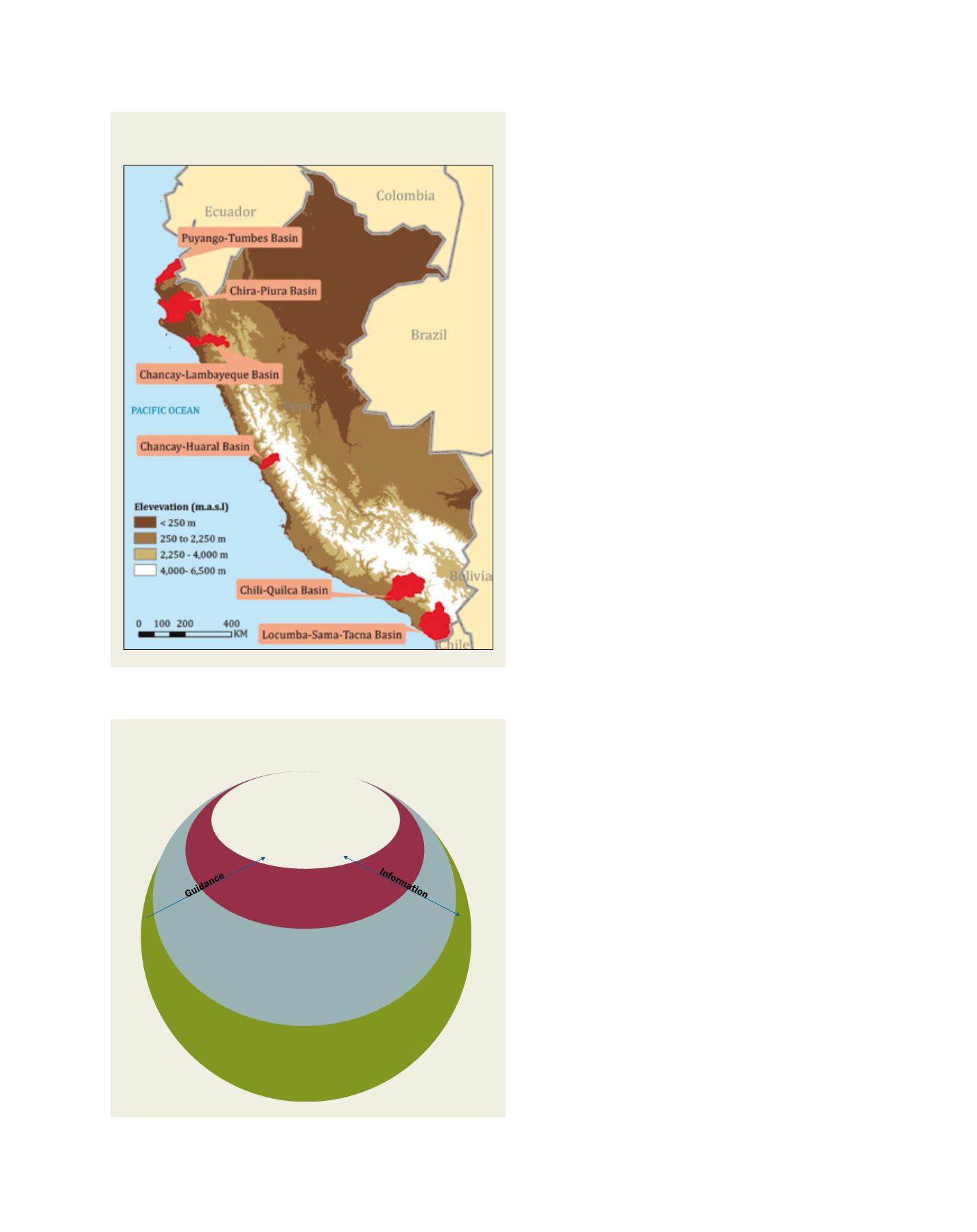

[
] 137
W
ater
E
ducation
and
I
nstitutional
D
evelopment
coast (15 mm average rainfall) with 30 per cent employ-
ment in the agricultural sector (13 per cent of GDP).
This wealth has enabled increases in public and private
investments. But it may have in turn triggered a record
189 social conflicts recorded in 2008 by the ombudsman’s
office of Peru, which are associated with infrastructure in
resource-rich areas of the Andean highlands.
1
Transparent
and participatory processes can actually hinder negotia-
tions related to natural resources, especially when interest
groups are inflexible. The challenge is to develop a mech-
anism that can structure transparency and participation,
involving a broad range of stakeholders while minimizing
rancour and needless delays in decision-making.
SVP in Peru
The challenges listed above are not unique to Peru, but
in fact routinely confront water planners and managers
in the United States and around the world. In response,
the US Army Corps of Engineers (USACE) developed
SVP as a collaborative planning process that integrates
systems modelling, structured public participation and
traditional water resources planning methods into a
practical approach to solve water resource problems.
2
SVP helps to facilitate agreement between diverse inter-
est groups on the facts, multiple objectives and values
related to a watershed or basin.
SVP has its origins in a response to severe droughts
in much of the US West, South-East and the Missouri-
Mississippi valley in the 1980s. The National Drought
Study developed a drought preparedness method that
was based on a systems analysis approach designed
by the Harvard Water Program of the early 1960s,
which shaped the basic principles and standards that
guide federal water resources investment. The drought
preparedness method, however, required planners to
cooperate with decision makers and stakeholders to
determine the criteria used to accept or reject a drought
plan and to develop metrics to evaluate alternatives; and
this collaborative technical analysis method eventually
evolved into SVP. SVP is part of a growing trend towards
collaborative modelling for decision support in water
resources, with an increasing number of water manag-
ers looking towards cooperation in technical analysis as
a solid and useful approach for water solutions.
In 2011, the Project for Modernization of Water
Resources Management (PMGRH), a section of ANA,
initiated six IWRM pilot basins to evaluate execution of
Peru’s 2009 Water Resources Law.
3
To do this, PMGRH
selected and adapted the USACE-SVP framework as the
process for transparent governance of natural resources
and participatory modelling. The framework would be
used in IWRM plan development by each of the six river
basin councils in the Chancay-Lambayeque, Chira-
Piura, Puyango-Tumbes, Chancay-Huaral, Chili-Quilca
and Locumba river basins.
Structured collaboration
SVP provides a framework to facilitate stakeholder
and decision maker collaboration in the iterative
Model builders (Level 1):
Technical Coordinators of
the basin, Consultant Firm,
President of RBC, AAA
Model Validators (Level 2):
Technical Working groups
Interest Groups (Level 3):
Water user associations,
municipalities, institutions,
universities, NGOs,
professional societies
Decision Maker (Level 4):
River Basin Council (RBC)
The circles of influence applied by SVP in Peru to develop IWRM
plans at the six pilot basins
Source: ANA
The six PMRGH pilot basins currently implementing SVP to
develop IWRM plans that are validated by river basin councils
Source: ANA


















